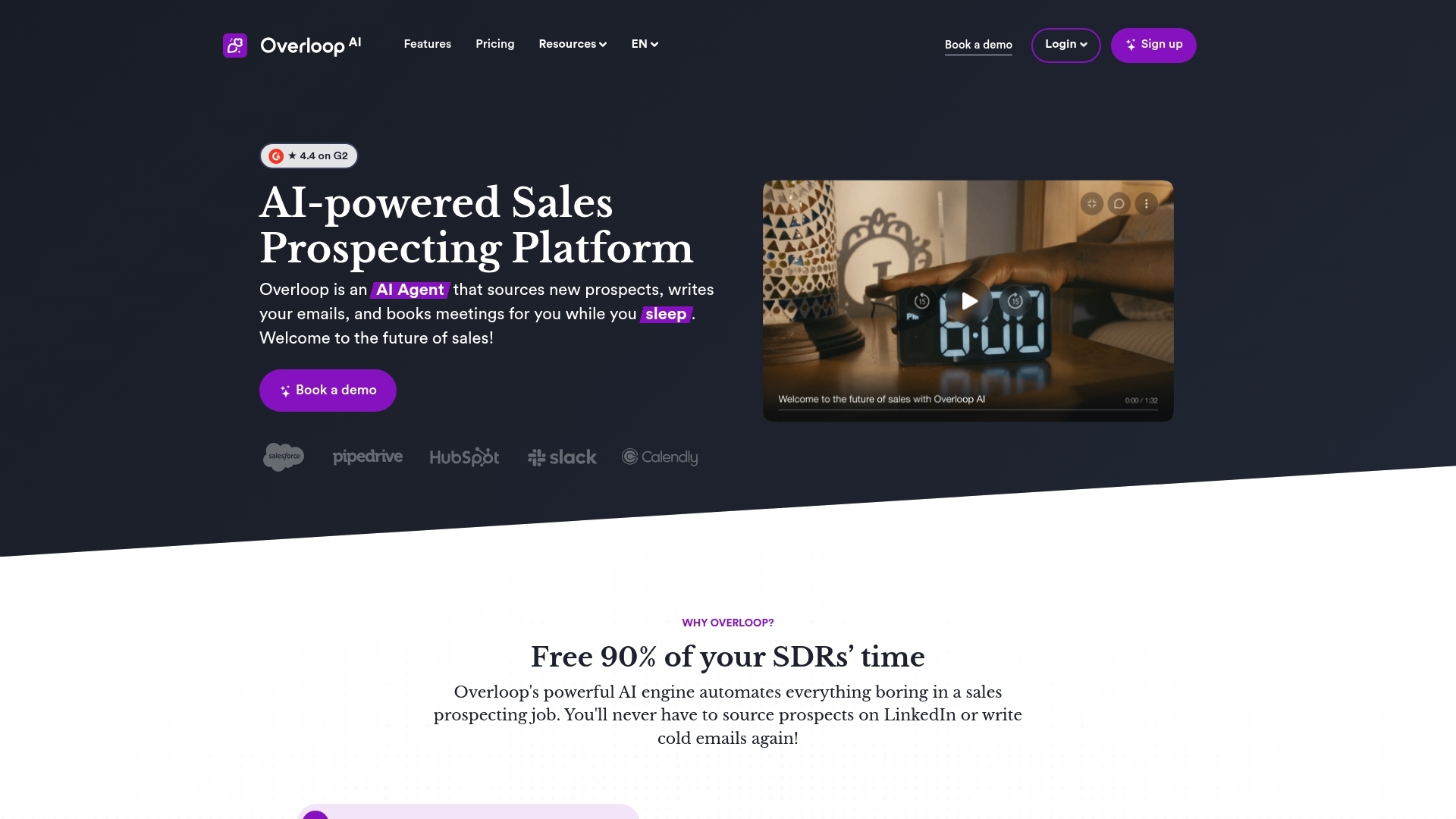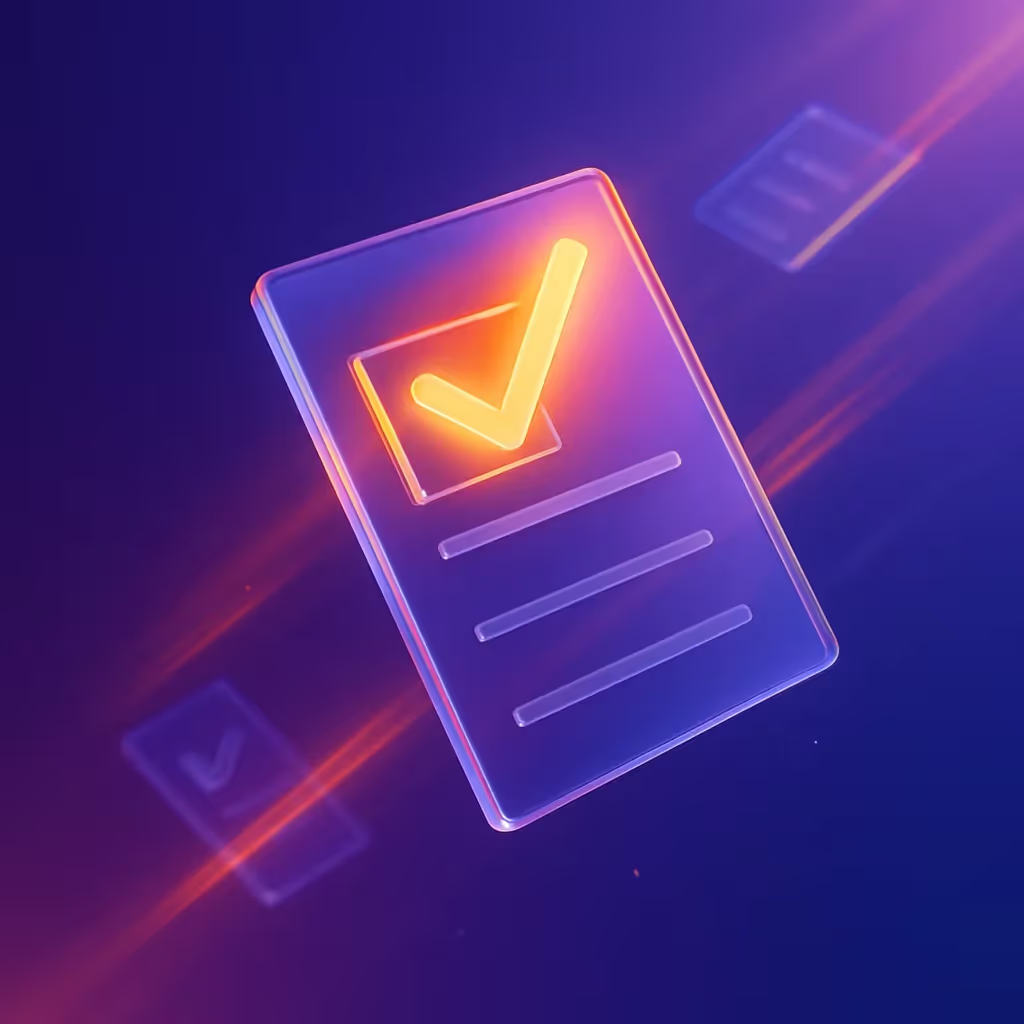B2B sales teams face constant pressure to find prospects efficiently, reach them on preferred channels, and close more deals in less time. Sales platforms have reshaped this process by unifying prospect sourcing, outreach, and campaign management in a single solution that removes much of the manual work that slowed teams down in the past.
What Is a Sales Platform?
A sales platform is a SaaS tool that enables companies to discover leads, communicate with prospects, and automate large parts of their outbound process. Instead of working across disconnected spreadsheets, CRM systems, inboxes, and outreach tools, modern platforms let users manage all outbound activities from one place.
The evolution from static lists and email blasts to today’s AI-driven platforms has increased sales effectiveness. Teams can now source up-to-date contacts from vast databases, launch multi-channel campaigns, and personalize messages automatically using artificial intelligence. As channels like email, LinkedIn, and digital events blend together in B2B outreach, these integrated features are becoming essential for teams looking to scale without growing overhead.
For example, Overloop uses AI to automate lead discovery and message personalization, connecting with your CRM and productivity tools to streamline outbound prospecting. As a result, sales professionals can focus more on building relationships and less on repetitive tasks, ensuring campaigns stay relevant in an increasingly competitive market.
Key Features of a Modern Sales Platform
Essential Tools for Streamlined Sales Processes
Modern sales platforms simplify outbound lead generation by bringing together several key features that minimize manual effort and accelerate results. Automation replaces traditional repetitive work, freeing sales teams to focus on more strategic selling activities.
Automated Lead Sourcing
Automated lead sourcing scans large B2B databases using specific filters so teams can quickly identify prospects that match their ideal customer profiles. With platforms that search data sets of hundreds of millions, you can find validated contacts based on firmographics, job titles, industries, and locations. This process reduces the hours usually spent on manual research.
Multi-Channel Outreach
Effective outreach now means more than just sending cold emails. Sales platforms combine channels such as email and LinkedIn into orchestrated campaigns from a single interface. Sales reps stay top-of-mind by connecting with prospects in the spaces they use most, which increases response rates and campaign success.
AI-Driven Personalization
AI-driven personalization allows teams to create customized messages at scale, using prospect data points to generate content that resonates with recipients. This boosts reply rates because contacts recognize communication tailored to their business challenges and needs. Overloop, for example, uses AI to draft personalized emails in over 80 languages, turning data into conversation starters automatically.
CRM and Productivity Integrations
Integrating with popular CRM tools such as Salesforce, Pipedrive, and HubSpot ensures up-to-date prospect records and activity tracking without manual updates. Native integrations with platforms like Slack and Calendly further streamline collaboration and scheduling within sales workflows.
Analytics and Reporting
Analytics features provide clear insights into what works and where adjustments are needed. Dashboards report open rates, reply rates, and conversions by channel or campaign segment, helping teams iterate and improve over time. Access to real-time data guides decision-making and drives continuous process refinement.
Deliverability and Compliance Protection
Email deliverability tools verify addresses and monitor sending patterns so outreach reaches inboxes and avoids spam filters. They help manage sending volumes, authenticate domains, and comply with anti-spam best practices to protect sender reputation. For more details on protection and data privacy, see our GDPR information.
Together, these components create a comprehensive, scalable solution for B2B sales teams looking to boost outbound results with less manual work.
How Sales Platforms Address Common Sales Challenges
As sales teams look for efficient ways to generate leads, common roadblocks often slow their progress. Manual research, incomplete data, and scattered communication tools frequently lead to wasted time and missed opportunities. Modern sales platforms streamline these challenges through automation, integration, and smart outreach orchestration.
Eliminating Manual and Repetitive Tasks
Manually sourcing contacts and updating spreadsheets can tie up hours each week. Sales platforms use AI-driven prospect discovery, pulling from massive B2B databases to automatically match prospects to a team's criteria. Rather than toggling between different sources, users receive verified and up-to-date contacts ready for outreach. Tools like Overloop reduce the need for manual data entry or lengthy research sessions, letting sales reps concentrate on building real conversations.
Connecting Disjointed Systems
Many sales teams juggle a patchwork of CRM, email, and outreach software. Data often ends up fragmented, hurting coordination and slowing campaigns. Integrated sales platforms synchronize information with key tools (such as Salesforce, HubSpot, and Slack), so updates happen in real-time and all activity sits in a single dashboard. This consolidation minimizes technical friction and gives every user a clear view of their pipeline.
Driving Engagement With Smarter Campaigns
Ineffective outreach typically comes from unpersonalized, one-size-fits-all sequences. Modern platforms take advantage of multi-channel outreach and AI-driven content generation, crafting personalized emails or LinkedIn messages at scale. Features that monitor deliverability protect accounts from deliverability issues, ensuring messages reach the right inboxes and reducing bounce rates. With platforms like Overloop, teams can deploy targeted, relevant sequences without manual customization for each lead, maximizing open and reply rates.
- Manual work drops, as automation replaces repetitive prospecting and messaging.
- Teams experience fewer errors caused by incompatible tools.
- AI-generated personalization boosts engagement compared to generic templates.
These improvements collectively address the main sales team pain points: lost time, disconnected data, and weak campaign performance. A unified platform delivers a more effective, predictable sales engine from first outreach to closed deal.
Business Benefits of Adopting a Sales Platform
Switching to a unified sales platform delivers concrete operational and financial advantages for B2B teams. Automation replaces time-consuming manual work. Tasks such as list building, research, and message writing shift from repetitive processes to quick, scalable actions. As a result, teams spend less time on administration and more time engaging with prospects. Shared workflows and integrations also prevent information from getting lost or duplicated in multiple tools.
Improved Productivity and Efficiency
Platforms with automated sourcing and AI-driven workflows allow reps to contact more qualified leads per day, significantly raising output without extra headcount. Managers can set up proven campaigns and templates that new team members instantly use. Routine onboarding becomes easier, ensuring new hires can perform quickly and consistently.
Higher Conversion Rates
Sales platforms equip teams to deliver genuinely relevant messages at scale, resulting in higher engagement and reply rates. Automated behavior tracking uncovers which sequences succeed and where leads show interest, enabling real-time campaign refinement. For example, Overloop’s AI personalization improves open rates, helping teams outperform generic outreach with messages matched to each recipient.
Better ROI and Predictable Pipeline Growth
When teams dedicate less time to busywork, cost per lead acquisition drops. Intelligent automation helps pinpoint which outreach strategies drive results, letting companies invest only in channels and messaging that convert. Consistent lead quality and volume lead to more accurate forecast models and pipeline visibility. This allows leaders to make sound decisions on hiring, budgeting, and process improvements. Learn more from our customer success stories.
- Eliminates duplicate data entry and context switching
- Protects sender reputation for sustained deliverability
- Reduces ramp time for new SDRs
By connecting prospecting, outreach, and analytics in one place, sales platforms position teams for faster growth with less effort and greater reliability.
How Overloop Empowers Outbound Lead Generation

Modern sales teams require tools that balance automation with the finesse of personalized communication. Overloop is an example of a solution built for this demand, giving users the resources to rapidly identify and engage relevant prospects—while keeping control over messaging, cadence, and campaign progress.
AI-Powered Prospecting and Outreach
Overloop’s core strength lies in automatic lead sourcing, which searches a B2B database containing over 450 million contacts. Teams input their target filters to receive verified, up-to-date information such as company size, industry, job title, and geography. This process removes hours of manual research and quickly fills pipelines with high-quality leads.
The platform’s AI-driven messaging engine crafts personalized emails and LinkedIn messages adapted to each prospect. With support for over 80 languages, outreach scales globally yet remains relevant for every recipient. Instead of sending generic blasts, users deliver contextual, highly engaging content designed to boost responses.
Multi-Channel Campaign Management
Overloop centralizes campaign execution so sales reps can launch and monitor email and LinkedIn outreach sequences without switching tools. Users schedule, track, and adjust multi-step workflows directly inside the platform, reducing friction that often stalls wider sales engagement efforts. Shared team dashboards allow for easy performance tracking and transparent pipeline oversight at any point in the campaign process. To see specific ways companies leverage these features, visit our Marker.io case study.
CRM and Collaboration Integrations
Seamless connections with Salesforce, Pipedrive, HubSpot, Slack, and Calendly keep all lead activity, messages, and appointments linked in real time. This integration eliminates duplicated work and helps teams maintain data consistency across customer touchpoints. Calendly access embedded within outreach emails lets prospects book meetings instantly, speeding up lead-to-demo conversion.
By combining automated prospect discovery, multi-channel orchestration, AI personalization, and native integrations, Overloop significantly reduces manual overhead for B2B sales teams. Teams achieve higher productivity, improved campaign outcomes, and smoother workflows while reaching their growth targets faster.
Real-World Use Cases: Sales Platforms in Action
Sales platforms bring practical value to daily outbound operations by solving real business challenges. Teams see the impact most clearly in moments such as onboarding new team members, expanding outreach, or entering unfamiliar markets.
Onboarding New SDRs Quickly
When new sales development representatives join, they must learn processes while still delivering results. Platforms with built-in workflows, sales playbooks, and email templates make onboarding fast and structured. Everything they need for prospecting, contacting leads, and managing replies sits in one place. Access to pre-made, compliant campaigns and real-time coaching helps new hires ramp up in days rather than weeks. With integrated databases like the one in Overloop, new SDRs do not waste time searching for leads or creating lists from scratch. See how this empowered 87seconds to start meaningful conversations.
Scaling Outbound Outreach
To reach more potential customers without expanding headcount, companies depend on automated outreach and AI-driven personalization. Modern platforms allow users to configure complex, multi-channel campaigns quickly. For example, teams can sequence email and LinkedIn messages, set up triggers based on prospect activity, and deploy outreach to large segments. AI features personalize each touchpoint, even at volume, so message relevance stays high. This approach means teams spend less time writing or copy-pasting and more time focusing on replies that turn into real opportunities.
Breaking Into New Markets
Launching into new segments, geographies, or industries traditionally required heavy research and manual mapping. Sales platforms with filters around firmographics, roles, or regions streamline the process. As an example, users set their targeting in Overloop, scan validated B2B contacts, and automatically initiate personalized outreach in the recipient’s language. This eliminates blind spots and increases the odds of connecting with the right decision-makers in each new target group.
These use cases illustrate how an integrated sales platform removes barriers and accelerates results across essential growth scenarios for B2B sales teams.
Choosing the Right Sales Platform for Your Team
Selecting a sales platform impacts how efficiently your team can reach prospects, close deals, and manage ongoing relationships. The right choice aligns with your sales goals and integrates well with existing workflows. Begin by considering your outbound strategy, volume of outreach, and the complexity of your sales process.
Essential Evaluation Criteria
- Feature Match: Identify the must-have features. Teams focused on high-volume outreach benefit from automated lead sourcing and multi-channel capabilities. Others may prioritize AI-driven personalization or granular analytics.
- Integration Capabilities: Check compatibility with critical tools such as CRM (e.g., Salesforce, HubSpot), productivity suites, and scheduling apps. Direct integrations prevent data silos and manual entry errors, leading to seamless workflows.
- Ease of Use and Onboarding: Choose a platform with an intuitive interface and short learning curve. Strong onboarding resources and responsive support are valuable for quick team adoption.
- Deliverability Safeguards: Ask about built-in protections for email reputation, such as automated address verification and domain authentication. This reduces the risk of messages missing the inbox.
- Scalability: Assess if the platform can handle increased outreach or new channels as your team grows. Consider platforms with a sizable lead database to avoid limitations later.
Map needs to providers by using trial accounts or requesting demos. Document requirements in a checklist to compare side by side. Include user feedback and read independent reviews from trusted sources when shortlisting vendors.
For teams needing automation, multi-channel engagement, and integration with existing sales tools, solutions like Overloop offer practical advantages. Out-of-the-box features like AI-powered prospect sourcing, campaign management, and deliverability protection reduce ramp time and operational risk. Book a demo to experience these capabilities firsthand. Match your current challenges to platform strengths for the best long-term outcome.
Conclusion: Maximizing Value with the Right Sales Platform
Adopting a sales platform transforms how teams execute outbound prospecting and build consistent pipelines. Instead of division between research, outreach, and CRM tasks, sales teams manage the entire process from a single tool. This unified approach helps teams remove manual steps, prevents data fragmentation, and keeps everyone focused on results rather than process.
Scaling Productivity and Results Through Innovation
The pace of modern B2B sales requires more than just hard work. Efficiency comes from automating repetitive tasks and maintaining high-quality engagement at every stage. Sales platforms equipped with automation, AI-driven insights, and integrated workflows bring this balance. The benefits touch every level of the sales cycle:
- Teams accelerate outreach by sourcing leads faster and automating initial contact
- Personalized, relevant messaging boosts engagement without extra manual handling
- Continuous data flow between platforms keeps records accurate and pipelines trackable
- Campaign outcomes improve as users experiment, learn, and iterate with analytics
These improvements combine to deliver higher conversion rates and better pipeline visibility. For sales leaders, predictability enables confident planning and sustainable growth. Businesses that embrace changes in sales technology position themselves to outperform those relying on disconnected, manual systems. Explore more practical sales strategies in our blog.
Choosing Tools That Grow With Your Strategy
When selecting a sales platform, longevity matters as much as feature set. Solutions like Overloop provide both the advanced automation needed today and the integrations to expand as teams evolve. By partnering with software that adapts to shifts in outreach channels, scales across different markets, and embeds new AI-driven capabilities, organizations avoid the need to switch tools each time strategy changes. This flexibility supports long-term success as outbound approaches adapt to new buyer behaviors and market conditions.
Sales success increasingly belongs to teams willing to streamline their workflows and leverage innovation. A modern sales platform offers a foundation for these efforts — raising productivity, improving campaign performance, and creating a sales process ready for continued growth.


